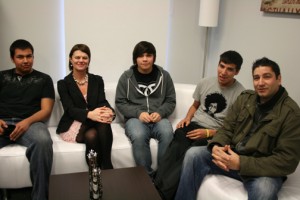Module 1- Blog #2 Parsons/Taylor
This article was a literature review about the current research on student engagement. It did not mention anything about Indigenous or FNMI students in the summary. As a result, I will look through all of the references to see if there are any examples that relate to this course and if not, that’s my next step- looking for specific research on student engagement FNMI youth.
Summary and Notes of the Parsons and Taylor article on Improving Student Engagement.
The article opens by emphasizing that there does not seem to be a clear consensus in any of the research on student engagement really means. There were examples that encouraged technology, there was emphasis on the differences between youth today and their parents and some examples of researchers who found evidence that society was coddling and “dumbing down” a generation.
The Common Elements within the research focused on:
1) Interaction
The development of relationships with people. Interaction with people and in the virtual world.
Connections, communication, dialogue, discussions, collaboration.
No social engagement category, included in interaction. Social engagement includes interaction.
2) Exploration
Classroom practices are predominantly inquiry based, problem-based and exploratory
Students want to figure out things for themselves
Want more hands-on, Do-it -yourself (think of youtube how-to videos as example)
Learning happens in action (not passive)
3) Relevancy
Application to real life, authentic application and not theoretical and text based
Communities issues
Working towards solving a problem
Making learning contextual
4) Multimedia & Technology
“Technology brings learners accessible and relevant subject matter and experts and is a tool for engaged learning” (Parsons and Taylor, 2010, p. 14)
Access and opportunity to integrate tools/ideas/media into their own learning
5) Engaging and Challenging Instruction
Need to change “how” we teach and “what” we teach
Moving from didactic to constructive pedagogy (Teaching “to” learners as opposed to Everyone learning together)
Constructivism: Click HERE
Creating “safe” environments
6) Authentic Assessment
1) Creating thoughtful,intentional designs for learning
2) making learning meaningful
3) building relationships
4)improving teacher practice in the presence of peer teachers
5) using assessment to improve learning and guide teaching
Co-creation of assessment will increase student engagement – because they are part of the process.
Assessment for Learning: (10 Guiding Principles)
AFL should be part of effective planning of teaching and learning
AFL should focus on how student’s learn
AFL should be recognized as central to classroom practice
AFL should be regarded as key professional skill for teachers
AFL should be sensitive and constructive because any assessment has an emotional impact
AFL should take into account the importance of (and foster) learner motivation
AFL should promote commitment to learning goals and a shared understanding of the criteria from which they are assessed
AFL develops learner capacity for self assessment so that they can become reflective and self-managing
AFL should recognize a full range of achievements for all learners
Learners should receive constructive feedback on how to improve
(Barrett, 2005, p.17)
Overall – I think that this article can give me a great framework of what to consider in my learning design for my online course delivery and possible final project.
Barrett, H. (2005) http://www.taskstream.com/reflect/whitepaper.pdf
Taylor, L and Parsons, J. ( 2011) http://www.taskstream.com/reflect/whitepaper.pdf

